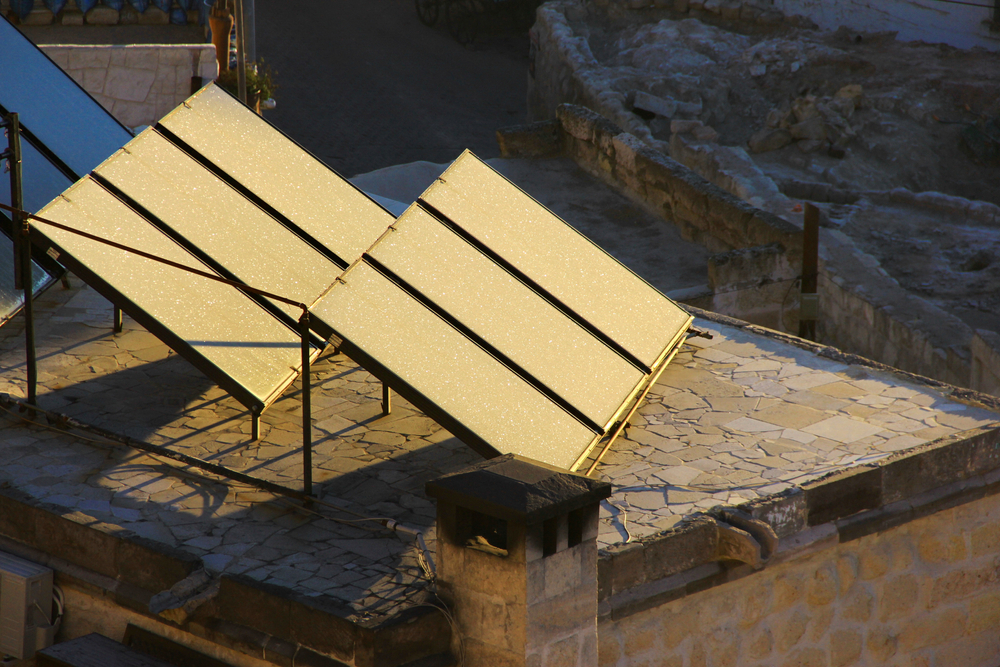These days, it’s near impossible to go anywhere or do anything without the aid of technology and electricity.
So what would happen if all of your devices stopped working? The implications are endless. Traffic lights would turn off, phones would power down, and all files saved on the internet or on the grid would be erased. While there are safeguards and backups in place to prevent these scenarios from happening, there is one thing that could overpower those safeguards: an electromagnetic pulse.
Here’s what you need to know about electromagnetic pulses (EMPs) and how to protect your digital assets from being completely erased in the event of an accidental, stray, or weaponized pulse.
What is an EMP?
An EMP is simply a short burst of electromagnetic energy. Because of the pulse’s high voltage and current, any electronic within the area will quickly have its electrical components fried. Depending on the source of the EMP and whether it was man-made or a natural occurrence, they could cause enough of an energy surge to negatively impact or destroy technology on a local and global scale.
There are three types of EMPs that you should be aware of: natural, man-made, and weaponized:
- Natural EMPs. This type includes pulses caused by lightning, electrostatic discharge, and coronal mass ejections (CME). Natural electromagnetic pulses are usually not seen as a serious threat to data storage centers and personal devices, but should still be safeguarded against in your data safety system.
- Man-Made EMPs. One step up in terms of pulse danger are man-made EMPs. Depending on the power source, these pulses may be more of a threat to your data than natural pulses. Everyday electrical circuitry, gasoline ignition systems, and power line surges are all examples of man-made EMPs. Not every electromagnetic pulse can harm your files, but some pulses like power line surges (which can be up to several kilovolts), can damage unprotected electrical devices.
- Weaponized EMPs. While often just a plot point in action movies, weaponized electromagnetic pulses are real and should be considered when deciding how to protect your data. Nuclear explosions can set off an EMP big enough to disrupt electrical grids across multiple regions. The Starfish Prime test in 1962, where a 1.4 megaton bomb was detonated above the Pacific ocean, caused electronic damage more than 1,400 kilometers away. Weaponized EMPs are a massive threat and should be considered when planning on how to save your files should one be used in the future.
While the majority of satellites have protective shielding against solar flares, CMEs still pose a significant threat to any technology both outside or inside the atmosphere. Since the CME’s magnetic disturbance will fight with the Earth’s own magnetic field, massive electrical outages could power down grids on a global scale. This kind of event would be a stark reminder of the uncomfortable truth that the earth is little more than a tiny, defenseless speck compared to the unfathomably large and violent nuclear explosion we call the sun.
Preparing for an EMP

Let’s assume that you’ve already prepared other parts of your life for a catastrophic event like a nuclear attack. You have enough food storage, defensive weapons, and know how to live comfortably without electricity for the foreseeable future. You should also have a plan in place to keep your important documents, photos, videos, and other files safe if and when electricity can be restored:
Backup Your Data Now
Instead of trusting the cloud as your only data storage source, you need to diversify your physical and digital storage options. While it won’t protect against all forms of an EMP, the popular 3-2-1 method of backing up your data is a good preliminary measure to take against risks to your data. This system requires you to have three different backups of your data, using two different storage types, and one of those backups should be in a different location. If you use a NAS device to store your data (which you should), backing up your NAS to the cloud can be a helpful way to split your data among different locations in your day-to-day life. In the event of an EMP, your NAS with built-in RAID will continue to keep your data safe should the data centers fail.
To go one step further, you should also keep copies of your most important files (deed to your land, birth certificate, passport, etc.) on physical pieces of paper. Paper is much more limited than digital files, but may be your only form of information should an EMP occur. Make sure to create a physical library of helpful survival information as well so you can thrive without needing to rely on Google.
Build Your Own Faraday Cage
You’ll want to encase your NAS device, walkie talkies, hand operated radio, and other small electronics you don’t want to be wiped out by an EMP somewhere safe. Faraday cages are a popular option that will guide the electromagnetic pulse into the ground and keep it from damaging your data. There are a lot of options out on the market to buy, but you can also make a faraday cage yourself from supplies you most likely already have at home.
Faraday cages can range from the size of a small bag for your cellular devices, or the size of a garage. A lot of people think that your home refrigerator or freezer can be used as a faraday cage, but unless the seal is extremely tight—which they often aren’t just from everyday use—they won’t be able to stop an EMP from disabling your electronics. However, some commercial-grade microwave ovens can be used as a faraday cage in the event of an emergency.
Building a faraday cage is relatively simple. Aluminum foil—a staple of any survival prepper—will be your main construction material since it’s able to disrupt electromagnetic fields. By wrapping your container, whether it’s a cardboard box or a metal trash can, in several layers of tinfoil (at least three layers), you can protect any item that is inside the container from a damaging EMP. Some items you should put in your faraday cage include:
- A laptop with backups of personal documents, survival e-books (with a charger cable that can be plugged into a small generator)
- Spare batteries—make sure to take batteries out of your devices in case they explode so they don’t destroy your electronics.
- A Kindle with your favorite books
- Solar powered battery chargers
- An iPhone or MP3 player with a library of music (and spare headphones) for entertainment
- Both rechargeable batteries and disposable batteries (of all sizes)
- A digital and manually set watch
- A NAS drive with built-in RAID as a backup to your cloud storage (could also use a thumb drive if you don’t have many files)
- Ham radio
- LED and hand-crank flashlights
- Any emergency medical equipment that requires electricity to operate
Make sure to test your Faraday cage after it’s built to make sure all electronic signals are being blocked. If the signals can’t get out, you can rest assured that no electromagnetic energy can get in as well. One of the most important parts of building your own Faraday cage is to make sure any items stored inside are not in contact with the metal exterior of your cage, otherwise, the metal exterior guides the EMP directly to your devices. Once your electronics are inside the cage, turn it all the way off so you don’t drain its battery as it searches for a signal.
Buy an EMP Shield

Using a surge protector in your home and at your office is one of the simplest ways to safeguard your data. Depending on the speed and strength of the EMP, your data may still be at risk of being destroyed, so having backups of your data is still highly recommended. But lower strength, naturally-occurring EMPs may be stopped with a simple surge protector.
One step above a simple surge protector is an EMP shield. Similar to surge protectors, these shields are designed to withstand larger pulses like lightning, coronal mass ejections, and high-altitude EMPs. At a few hundred dollars, they cost more than traditional surge protectors but will help keep your data from being fried should a pulse happen.
Are EMPs Really That Big of a Threat?
While taking all of these steps to safeguard your digital electronics in the event of an EMP may seem unnecessary, it never hurts to be prepared. The odds of a devastating EMP—whether natural, accidental, or a man-made attack—are unknown. But more and more countries are developing the technology necessary to launch such an attack. Given the current state of the world, it’s not out of the realm of possibility that a weaponized EMP could strike. And when that happens, do you really want to be cut off from the rest of the world?
EMPs are a real threat, no matter how out of the world of science fiction it may sound. While you should first secure your physical needs in a disaster situation first (food, water, warmth, and shelter) you should also have a plan in place on how to secure your digital assets. While some of them might simply be backup for if and when the power grid goes back on (like your NAS drive), others will be essential for your survival (like a radio, walkie talkie, and GPS device). It may take weeks or months until power is restored. Prepare your technology well before an EMP occurs, and you’ll be more than ready to handle whatever comes your way should the worst happen.




















































































Questions: how do you test if your homemade cage is fully protecting your electronics and what materials can be used to keep the electronics from touching the cage?
Another item for your faraday cage could be a portable speaker. Either a blue tooth speaker or for use with an audio cable.
Does the tin foil wrapped box have to be grounded ? Could I use an old microwave as a nfaraday cage ??
There’s a story regarding what happens after an EMP blankets all of the US: “One Second After” by William R. Forstchen. As a short review let’s say its author has the most hideously overactive imagination possible and can give preppers nightmares. Along with the other doomsday scenes included there’s two separate incidents dealing with the main characters two Golden Retriever dogs.
Just for those scenes I don’t think I’ll re-read this book in a long time. However, it is raw enough to make any hardened prepper go to his/her hidden root cellar and count cans, batteries, aspirin, and rounds of ammo in a new unit of time. It’s worth one read (ONE!) so, please, check it out.
I understand there are 2 or 3 other books that continue the story you mentioned. Something like “One Week After” and maybe “One Year After”. I’m guessing at the titles, but you get the idea.